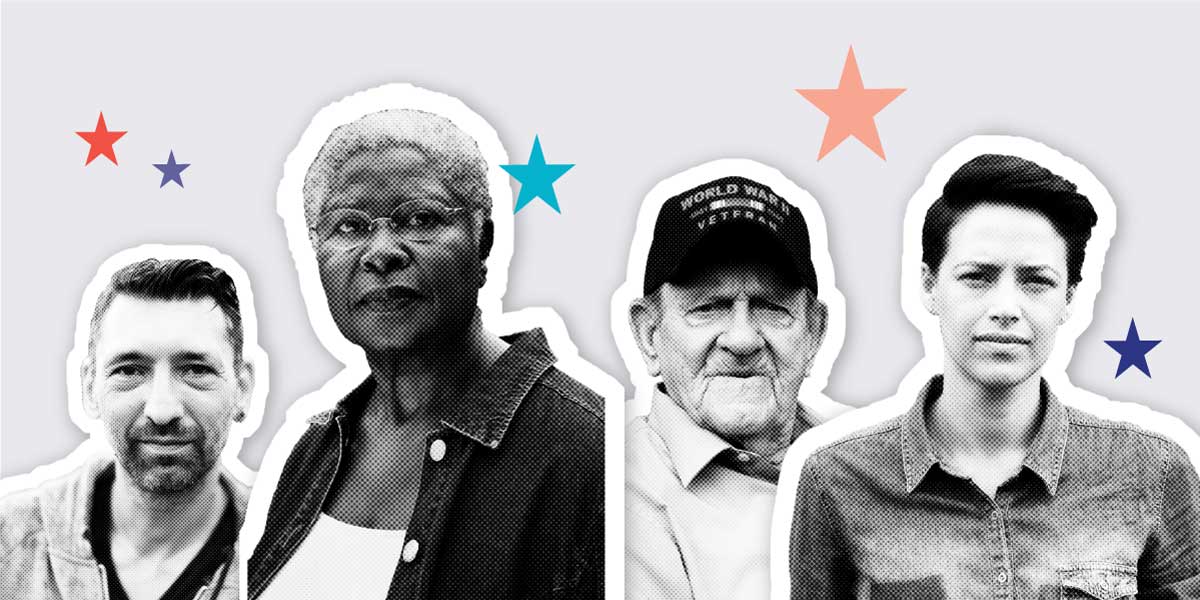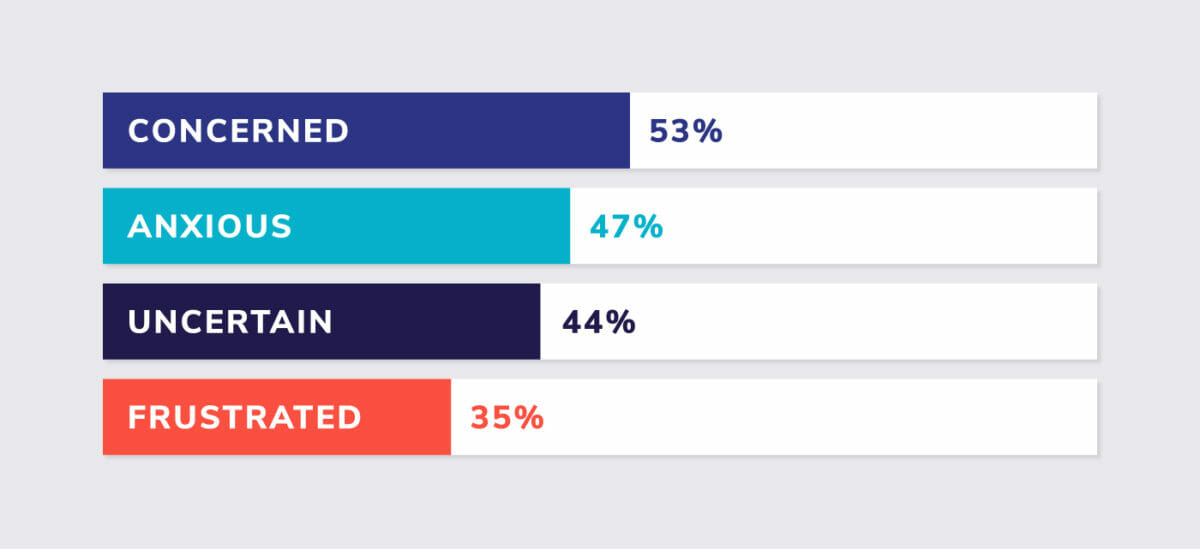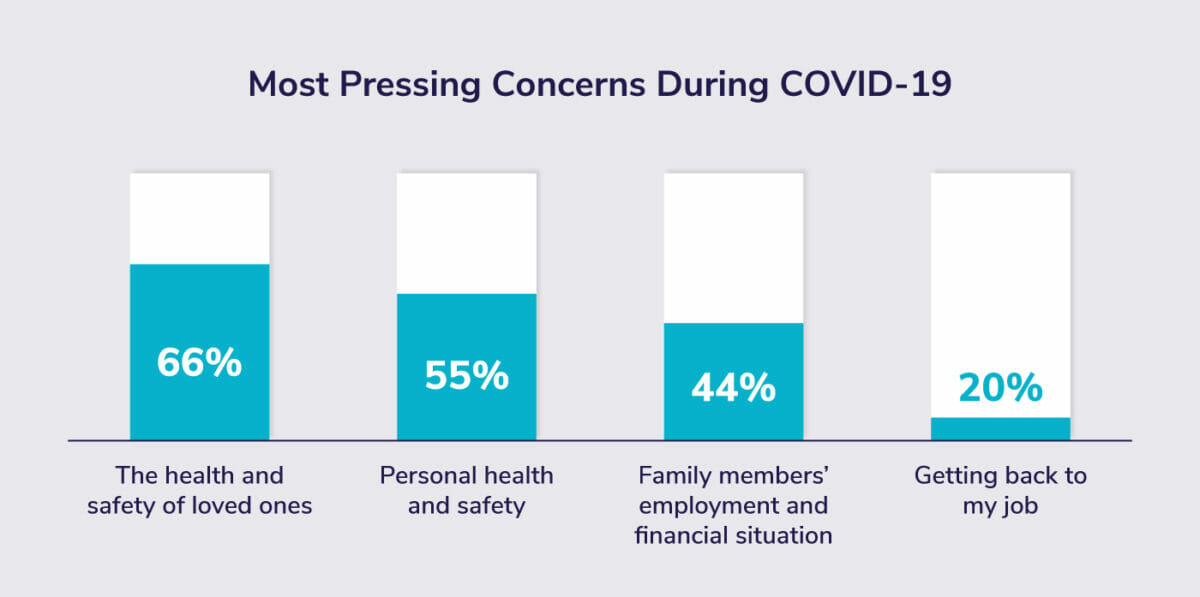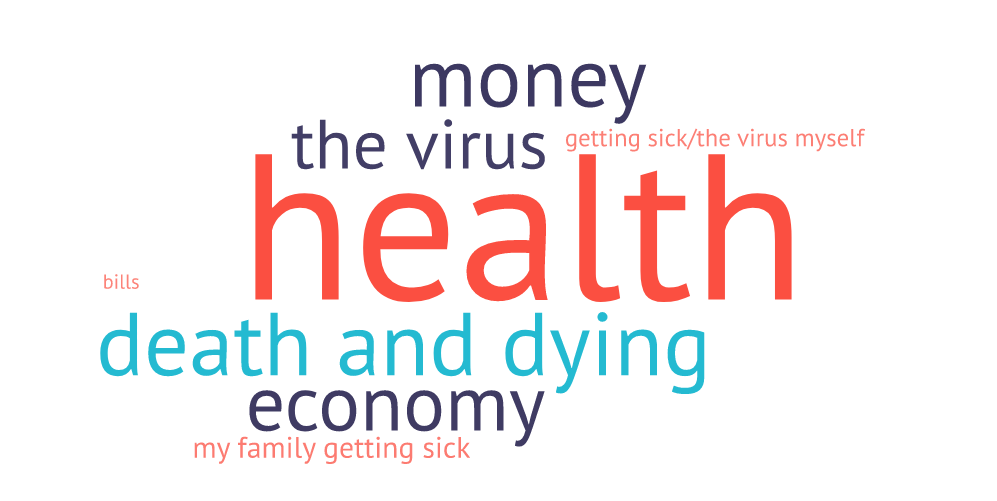COVID-19, Research
Humanizing the Response to COVID-19 By Listening to People

Health care policy has historically been polarized and politicized. Core to why we started United States of Care, we hope to humanize the health care debate and response to COVID-19, as well as center solutions on what people need by listening to people and elevating shared values. We believe that if we – as a country and as leaders – aren’t meeting people where they are, we will miss the moment to pave a path toward lasting positive change.
Along with in-depth one on one interviews and analysis of public opinion, we commissioned and analyzed a national survey of Americans that further examines several key questions, including:
- How people are doing; their worries and concerns; what brings them hope?
- What matters to them in their personal lives and in their community right now?
- What they need from the health care system; and how confident are they in the health care system?
The results raise some critical considerations for policymakers and the overall approach to implementing solutions. To that end, we created a Guide to Humanizing the Health Care Debate and COVID-19 Response for policymakers and other leaders. Our goal is to motivate state and federal elected officials to seek the public’s engagement in order to develop durable, people-centered policy solutions.
Reflection: Why is this missing from the national conversation?
Before I share the findings – a reflection. At first these findings may seem remarkably obvious. When I share this work with others, I see head nods of agreement reflecting on how we all feel throughout the day: Anxious, concern, and worry intermixed with hope and gratefulness; thoughts about loved ones, about our country, the economy and our wallets, about our individual and shared future; and, finally, concurrence on the priorities that our health care system should focus on. I worried when I shared our findings that the obviousness of them would undermine the usefulness of this work.
I soon realized, instead, a disconnect from the national discourse and our findings. We aren’t actually having a national conversation which reflects what we have heard from people in our discussion and in our survey. While we watch the news of partisan fights over the backdrop of human loss and a cratering economy, we are neglecting to identify what we all have in common right now, and which differences are noteworthy. And while I don’t pretend there aren’t true differences occurring from all angles – different health needs, financial needs, and partisan differences – it is our intention with this research to nuance the national discourse in a way that resonates with people and humanizes the response to the pandemic.
Key Findings: People Share diverse set of feelings and needs
Throughout our research, we encountered people expressing waves of emotions – including significant levels of anxiety, uncertainty, frustration, hope, and gratitude – with deep concern about the health and financial well-being of themselves and their loved ones. While immediate fixes are needed, COVID-19 has also illuminated the public’s desire for long-term fixes, including a more reliable health care system that cares for everyone and supports essential workers. The findings are below; this is a stepping stone in our ongoing research and only a part of the many questions we want to ask and learn from.
Real Feelings
Americans are feeling a mix of emotions related to the pandemic, and those emotions are overwhelmingly negative. These findings also show that we can hold conflicting feelings at once – something I believe we have all felt during this moment.
Our survey has uncovered levels of concern (53%), anxiety (47%), uncertainty (44%), and frustration (35%).

Across the board, the public is deeply concerned about their health and financial wellbeing, both for themselves and the nation. A significant number of people, from both sides of the political spectrum, are putting concerns about their loved ones ahead of themselves, and are deeply concerned about their community and those on the frontlines.

I just want to make sure that I make enough money to take care of my family.
Male. 35-44. Very Conservative. Vocational Technical College Education. White.
I worry about my financial future.
Female. Lean Progressive. Postgraduate Education. Black.
Protect my grandparents from the coronavirus.
Male. 35-44. Lean Conservative. High School Education. Hispanic.
Not being able to provide for my children or dying from this virus.
Female. 25-34. Apolitical. Vocational Technical School Education. White.
It is also evident that worries acutely arise in specific demographics further highlighting existing divisions, disparities and inequities. For example, when asked what they are most worried about, in open ended responses, African American women are most worried about “money,” Republican high school-educated white men about “the economy,” and Republican men and women in general are worried most about getting sick.

Americans are also finding hope (33%) and gratefulness in the midst of this crisis—in religion, their families, and stories of people helping others. In several of our survey’s open-ended questions, similar responses were found across a variety of demographics (Republican and Democrat, rural and urban, African American and White) showing that Americans have more in common than what is being amplified in the partisan arena.
Our findings exemplify that there is a common—and in some cases heartbreaking—experience that we all share, even if we each have unique circumstances. In addition, the results of the survey demonstrate people’s awareness and concern that the recovery process will take time, even for those who don’t get sick.
Shared Needs
As we evaluate the trends, data and public opinion findings across communities shared needs are emerging in response to the pandemic, including the desire for:
- A reliable health care system that is fully resourced to support essential workers and available to people when it is needed, both now and after the pandemic.
- A health care system that cares for everyone, including people who are vulnerable and those who were already struggling before the pandemic hit.
- Accurate information and clear recommendations on the virus and how to stay healthy and safe.
- Being able to provide for ourselves and our loved ones, especially as we are worried about the financial impact of the pandemic.
View of the health care system has changed for some; not for others
One thing is certain, the pandemic has illuminated the deficiencies of our health care system. Many respondents reflect on the fact that the U.S. was caught unprepared to handle the pandemic and our losses have been greater than those of other countries. There is an interest in improving the health care system for everyone, and Americans report the desire to see support for essential workers, including doctors and nurses, who are greatly respected and assurance of a functioning health care system that is fully resourced. When asked about how the health care system is handling the epidemic, many respondents focused on the government instead of the performance of the health care system.
Are we ready for long-term change?
At a time when so much is unknown, people are concerned about protecting and providing for themselves and their loved ones. This unprecedented moment has created an opportunity for our leaders to address the long standing needs of our health care system by developing and implementing durable policies that meet the public’s demands and recognize the public’s shared needs and values. Prior to the pandemic, a key theme we heard from people was their distrust in the system, at large. This distrust was often associated with beliefs that the system was profit-motivated, challenging to understand, and difficult to navigate. While these sentiments remain present, they are seen by people now as reflection of a much larger issue, beyond their own personal experience with the health care system and one that affects everyone. This moment may allow reform to a system that often has not had caring for people at the center.
Supporting Leaders to Put These Findings Into Action
State and federal officials should show how they are listening to the public by proposing durable, people-centered policy solutions. These solutions should address not only the short-term challenges, but also be designed to remove the long-standing barriers in our current health care system. People need to feel heard and that the health care system is there to support them. To be successful, policymakers must:
- Meet Americans where they are. The COVID-19 pandemic is exposing how the health care debate lacks a sense of humanity, making it feel detached from what people are experiencing. Leaders should connect with the American public on an emotionally resonant level and address feelings of anxiety and concern. We continue to see compassionate leadership from state and local leaders being well-received by the public.
- Recognize the interconnectivity between health and financial wellbeing which has been illuminated by the pandemic. Consider this connection of health care and the economy when building and implementing solutions.
- Seek solutions to build a health care system that is fully resourced and ready to support essential workers, doctors, nurses, and the public.
- Center the people you’re trying to impact within the design of new policies. Continue to listen to constituents and consider formalizing the ways you gather input from community members and work with community and business leaders.
United States of Care is already putting these findings into action through the policy priorities we’re recommending to federal and state policymakers.
Components of our Research
United States of Care conducted a series of assessments to understand the feelings and needs of the American public in response to the pandemic. In early March, we began conducting regular, comprehensive assessments of available public opinion surveys from a variety of pollsters, including Kaiser Family Foundation, Gallup, Pew, and others. We also conducted in-depth interviews with members of the public between April 3, 2020 and May 1, 2020. Our national survey was conducted May 1-3, 2020, and carried a confidence interval of 90%, with a margin of error between 2-4%. It included a sample size of 2,156 respondents, with oversamples for African American women, Republican-identified men and women, and Republican-identified high school-educated white men. These findings have been compared with findings from our ongoing listening effort which began before the pandemic.